The term degenerative scoliosis refers to an abnormal curvature of the spine that occurs to degeneration from arthritis. There is a significant difference between scoliosis in 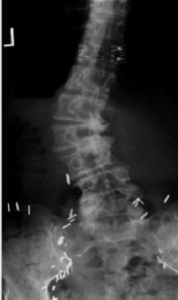 adolescents versus those who are skeletally mature adults.
adolescents versus those who are skeletally mature adults.
When a person has adolescent scoliosis, the spine is usually fairly flexible and often times bracing can even help stop the curvature from progressing. If an adolescent goes on to scoliosis surgery, typically various surgical maneuvers are available to help correct the scoliosis because the spine is fairly flexible.
However, as a person gets through adolescence and into adulthood, the spine becomes much less flexible and scoliosis surgery is very different. Multiple studies have been done looking at whether or not scoliosis progresses after adolescent period. What’s been shown is that if the adolescent curvature is over 40°, curves do typically tend to get worse in adulthood at a rate of approximately 1° per year. This may not sound like much, but over a period of 30 years, it can really add up. (Kobayashi et al, “A Prospective Study of De Novo Scoliosis in a Community Based Cohort,” Spine, 2006)
Types of Degenerative Scoliosis
Exacerbation of scoliosis in adulthood when a person had scoliosis as an adolescent is the first type of degenerative scoliosis. 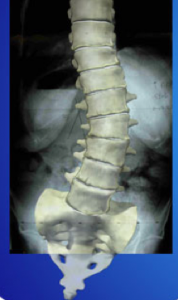
The second type of degenerative scoliosis is when a person had no issue during adolescence and developed scoliosis only as an adult. This occurs initially with the degeneration of the intervertebral discs.
The intervertebral discs at times do not degenerate symmetrically. When this happens, abnormal curvature can result and as facet arthritis ensues it can make the curvature a lot worse. Not only can a person get abnormal curvature in a side to side direction, the spine can also rotate due to asymmetrical arthritis as well.
Surgery as an adult for the degenerative scoliosis carries with it a high risk profile. Over 50% of surgical patients end up with complications. These may include something small such as a minor skin infection, or it can be something very serious such as a nerve injury, deep infection, or cardiac event during the surgery.
Due to the high risk of complications, it is in a person’s best interest to exhaust all forms of conservative treatment prior to deciding to undergo an elective scoliosis correction procedure.
Along with back pain associated with arthritis for scoliosis, person may also have nerve pinching due to the curvature. As the nerve roots are trying to get out from the spinal canal, they can be compressed due to the abnormal curvature, especially on the concave 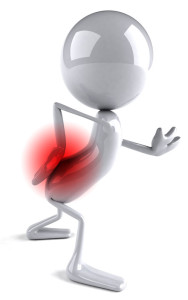 side of the curve. This is called spinal stenosis and usually causes pain in the buttock, hip area, and into one’s legs.
side of the curve. This is called spinal stenosis and usually causes pain in the buttock, hip area, and into one’s legs.
Call (602) 507 – 6550 to schedule your Appointment TODAY!
Nonoperative Treatment for Degenerative Scoliosis
Conservative treatment for the pain from degenerative scoliosis is often very effective and maintains a much lower risk profile than surgery.
Initial treatment should consist of over-the-counter medications such as anti-inflammatories and Tylenol. They should be taken according to the manufacturer’s recommendation to minimize the risks.
If an individual has exacerbations of the pain from time to time, an Arizona pain doctor can prescribe short-term narcotics to help keep the pain under control during these time periods. Chronic narcotics for the pain from degenerative scoliosis is usually not the best idea due to the risks of addiction, tolerance and constipation.
Physical therapy and chiropractic treatments are often very effective at pain relief with scoliosis. These therapies will not decrease the curvature, but they can help with the pain by strengthening up muscles around the spine and temporarily decreasing nerve root compression.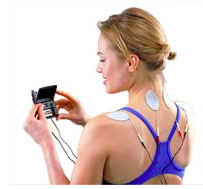
Additional treatments include TENS units, spinal decompression therapy, acupuncture and massage.
Interventional pain treatments often provide months of relief. The pain from spinal stenosis is well treated with epidural steroid injections. These are often performed as a series from 1 to 3 injections, and may be repeated every few months. Studies have shown that epidural steroid injections for spinal stenosis maintain a 75% good to excellent results. The results may last for months at a time.
For the back pain itself, facet joint injections may help substantially, or medial branch blocks can provide excellent pain relief as well. If the medial branch block around a facet joint works well and then wears off after a few weeks to a few months, a radiofrequency 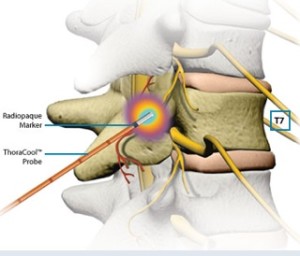 ablation procedure may provide 6 to 18 months of considerable pain reduction. Since degenerative scoliosis often involves arthritis and pain coming from multiple joints, the radiofrequency procedure can be performed at multiple joints to provide the most pain reduction.
ablation procedure may provide 6 to 18 months of considerable pain reduction. Since degenerative scoliosis often involves arthritis and pain coming from multiple joints, the radiofrequency procedure can be performed at multiple joints to provide the most pain reduction.
Newer studies are also showing that when the pain comes back, radiofrequency procedures work just as well the second time around.
Risks of Interventional Treatments
The risks of epidural injections include a minor risk of infection, nerve injury, bleeding or a transient increase in blood sugar and water retention due to the injected cortisone. The same risks may occur from a medial branch block or facet joint injection, but there is minimal risk of any nerve injury since the needle does not go into the spinal canal.
The risks of a radiofrequency ablation are the same as the other procedures but patients may also experience an initial increase in pain due to muscle spasms from the procedure. These usually subside with excellent pain relief within a couple weeks.
The Bottom Line
Surgery for adult degenerative scoliosis is an elective procedure. As mentioned, there are significant risks involved and therefore, all conservative treatment should be tried prior to undergoing the procedure.
Less than 10% of those with symptomatic degenerative scoliosis end up needing surgery for the condition. Effective pain management often negates the need for surgery.
Arizona Pain Specialists provides a multitude of nonoperative therapies to help avoid surgery for degenerative scoliosis. These include the procedures and therapies and medications mentioned above along with regenerative medicine treatments that are just coming into play.
Call (602) 507 – 6550 to schedule your Appointment TODAY!

![]()
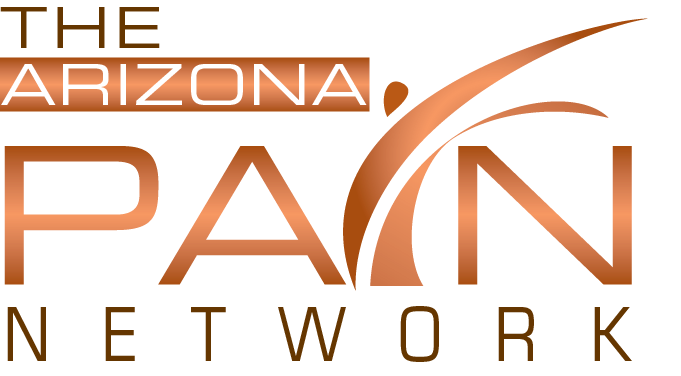

 adolescents versus those who are skeletally mature adults.
adolescents versus those who are skeletally mature adults.
 side of the curve. This is called spinal stenosis and usually causes pain in the buttock, hip area, and into one’s legs.
side of the curve. This is called spinal stenosis and usually causes pain in the buttock, hip area, and into one’s legs.
 ablation procedure may provide 6 to 18 months of considerable pain reduction. Since degenerative scoliosis often involves arthritis and pain coming from multiple joints, the radiofrequency procedure can be performed at multiple joints to provide the most pain reduction.
ablation procedure may provide 6 to 18 months of considerable pain reduction. Since degenerative scoliosis often involves arthritis and pain coming from multiple joints, the radiofrequency procedure can be performed at multiple joints to provide the most pain reduction.